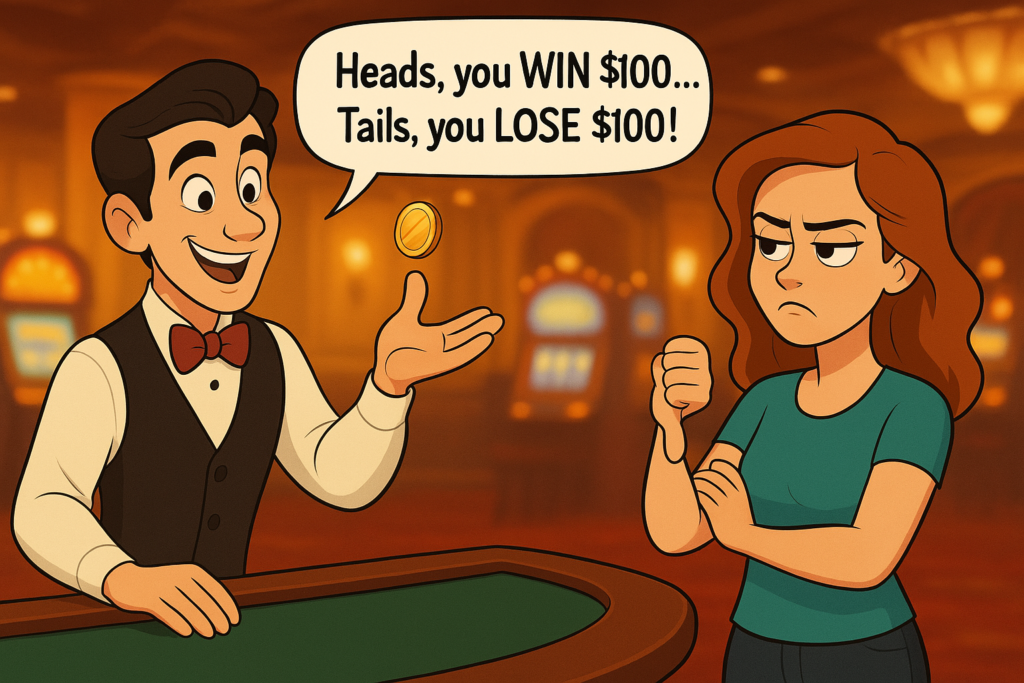
In my last email, I introduced a series on the hidden psychological barriers that block customers from buying products they would otherwise LOVE.
I started with the remarkable power of price anchoring.
Today, I’m exploring what might be the strangest and most powerful of all mental barriers: Loss Aversion.
First identified by Nobel Prize-winning psychologist Daniel Kahneman (yes, one of the scientists from that anchoring test I told you about yesterday), loss aversion is our proven tendency to prefer avoiding losses over acquiring equivalent gains.
More specifically, the pain of losing something is psychologically about twice as powerful as the pleasure of gaining something of equal value.
This isn’t a mere preference. It’s a fundamental rewiring of how we evaluate decisions.
Imagine I offer you a coin flip bet:
- Heads, you WIN $100
- Tails, you LOSE $100
Most people immediately decline this mathematically FAIR bet.
The risk of losing $100 feels significantly worse than the possibility of gaining $100 feels good.
Research shows I’d need to offer you about $200 for winning to balance the psychological impact of potentially losing $100.
Two to one!
That’s how powerful loss aversion is — and it’s probably harming your sales.
In I Need That, I explain how customers overvalue what they already have by a factor of three, through a stacking of status quo biases. Loss aversion is the psychological engine behind this resistance.
It’s a MASSIVE barrier when your goal is to replace a status quo option.
Your customers aren’t rationally weighing the benefits of your product against its cost.
They go on to add an enormous psychological tax on anything they might have to give up:
- Their existing solution (even if objectively inferior)
- Their money (which feels like a certain loss)
- Their time learning something new
- Their reputation and pride if they choose wrong
This is why even clearly superior products can struggle to gain traction.
The math in your customer’s head isn’t working in YOUR favor — because they need to see it to be tilted in THEIR favor!
Product Payoff: Many people forget that Netflix really struggled with customer acquisition until they introduced their iconic free trial. While the trial demonstrated the service’s value, its true psychological power was in leveraging loss aversion. Then, after 30 days of movie enjoyment, cancelling Netflix felt like losing something they already had, more than declining to buy something new. This flipped loss aversion from barrier to accelerant, helping propel Netflix’s growth to surpass 300 million subscribers this January.
Action for today: Jot down everything your customer might perceive as a “loss” when adopting your product. Then develop specific messaging that either minimizes these losses (money-back guarantees, free trials, migration assistance) or reframes the status quo as the bigger loss (what opportunities, time, or resources are they losing by NOT adopting your solution?).
Can you adopt a product-led growth model like Netflix, where you get people hooked for free, so they must choose to either start paying, or accept the pain of losing something they love?
Get set for tomorrow’s email, where I’ll explore how the Paradox of Choice can weirdly reduce your sales despite giving customers exactly what they say they want.
Have you seen loss aversion affect your own product’s sales? What loss are your customers most afraid of? Tap that psychologically compelling reply arrow and share your experience.
I love it, and will make it worth your while with TWICE as many words as you write to me!
Reach out to my team of product marketing specialists at Graphos Product to tilt the game in your favour.
